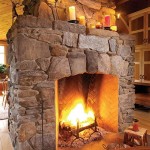Can Fireplace Ash Be Composted? Understanding the Benefits and Precautions
The question of whether fireplace ash can be composted is frequently raised by homeowners with wood-burning fireplaces or stoves. The answer, in short, is yes, but with crucial caveats. Fireplace ash, under the right conditions and in moderation, can be a beneficial addition to a compost pile. However, improper use can negatively impact the composting process and even harm the plants for which the compost is ultimately intended. A clear understanding of the composition of wood ash, its potential benefits, and the precautions necessary for safe composting is essential before adding it to any compost system.
The composition of fireplace ash varies depending on the type of wood burned. Hardwoods like oak and maple generally produce ash with a higher mineral content than softwoods such as pine or fir. Ash primarily consists of calcium carbonate (lime), along with potassium, phosphorus, magnesium, and trace amounts of other essential plant nutrients. These nutrients can enrich the soil and promote plant growth. However, ash also contains a high pH, making it alkaline. This alkalinity is a critical factor to consider before incorporating ash into compost.
Furthermore, not all ash is created equal. Only ash from natural, untreated wood should be considered for composting. Ash from burning painted wood, pressure-treated lumber, charcoal briquettes, or any material containing chemical additives should never be added to a compost pile. These materials can introduce harmful toxins into the compost, rendering it unsuitable for use in gardens or around edible plants.
Understanding the Benefits of Composting Fireplace Ash
When used correctly, fireplace ash offers several benefits to the composting process and the resulting compost. These benefits stem from its mineral content and its effect on the pH of the compost pile. Here are some key advantages:
Nutrient Enrichment: As mentioned earlier, wood ash contains essential plant nutrients. Potassium, for example, is crucial for flower and fruit development. Phosphorus aids in root growth, and calcium is vital for cell wall structure. By adding ash to the compost, these nutrients are gradually released into the soil when the compost is applied, providing plants with a slow-release source of nourishment.
pH Regulation: Compost piles often become acidic as organic matter decomposes. This acidity can inhibit the breakdown process and make it difficult for beneficial microorganisms to thrive. Wood ash, being alkaline, can help to neutralize this acidity, creating a more favorable environment for composting organisms. However, it is crucial to monitor the pH and add ash sparingly to avoid making the compost too alkaline.
Odor Control: A well-managed compost pile should not produce offensive odors. However, if the pile becomes too wet or anaerobic (lacking oxygen), it can start to smell unpleasant. Wood ash can help to absorb some of these odors, particularly those produced by ammonia. This is because the alkaline nature of the ash can neutralize acidic odor compounds.
Precautions When Composting Fireplace Ash
Despite the benefits, there are several precautions to take when composting fireplace ash. Overlooking these precautions can lead to problems with the compost pile and potential harm to plants. The following are critical points to consider:
Moderation is Key: The most important precaution is to use ash sparingly. Excessive amounts of ash can raise the pH of the compost too high, inhibiting the decomposition process and making the compost unsuitable for acid-loving plants. A general guideline is to add no more than a thin layer of ash (about one inch) to a compost pile that is at least three feet in diameter or length and width. A better approach is to add it in small increments over time, allowing the compost to adjust.
Source Matters: As previously emphasized, only ash from untreated wood should be used. Avoid ash from treated lumber, painted wood, charcoal briquettes, or any other material containing chemicals. These materials can contaminate the compost and introduce harmful substances into the soil.
Particle Size: Large chunks of unburned wood or charcoal should be removed from the ash before adding it to the compost. These larger pieces will take a long time to decompose and can tie up nitrogen in the compost pile. Sieving the ash can help to remove these larger particles.
Mixing Thoroughly: After adding ash to the compost pile, mix it in thoroughly to ensure even distribution. This will prevent localized areas of high alkalinity. Turn the compost pile regularly to aerate it and promote even decomposition. The more frequently the compost is turned, the more evenly the ash will be distributed.
Avoid Direct Application to Sensitive Plants: Compost containing wood ash should not be used directly around acid-loving plants such as blueberries, azaleas, and rhododendrons. These plants thrive in acidic soil, and the alkaline ash can raise the pH to a level that is detrimental to their growth. It is best to test the soil pH before applying compost containing wood ash, especially in areas where acid-loving plants are grown.
Handling Precautions: Wood ash can be dusty and irritating to the skin and respiratory system. Wear gloves and a dust mask when handling ash to avoid irritation. Avoid breathing in the dust, and wash your hands thoroughly after handling ash.
Alternative Uses for Fireplace Ash
If composting fireplace ash is not feasible or desirable, there are several alternative uses for this byproduct. These uses leverage the alkaline properties and mineral content of the ash while avoiding the potential pitfalls of improper composting. Here are some alternatives:
Soil Amendment for Alkaline-Loving Plants: While ash should not be used around acid-loving plants, it can be beneficial for plants that prefer alkaline soil, such as asparagus, garlic, and lavender. Apply a small amount of ash directly to the soil around these plants, taking care not to over-apply. Test the soil pH regularly to ensure that it remains within the desired range.
Slugs and Snail Deterrent: A barrier of wood ash can deter slugs and snails from damaging garden plants. Sprinkle a thin line of ash around vulnerable plants, such as lettuce and hostas. This barrier acts as a physical deterrent, as slugs and snails are reluctant to crawl across it. Be aware that the ash will need to be reapplied after rain.
Path and Driveway De-icer: In winter, wood ash can be used as a de-icer on paths and driveways. The ash's dark color helps to absorb sunlight and melt ice. The ash also provides traction, making surfaces less slippery. However, be mindful that ash can stain concrete and other surfaces.
Cleaning Agent: Wood ash can be used as a mild abrasive cleaner for certain surfaces, such as glass and metal. Make a paste of ash and water and use it to scrub away stains and grime. Be sure to test the paste on an inconspicuous area first to ensure that it does not scratch the surface.
Neutralizing Acidic Spills: Wood ash can be used to neutralize spills of acidic substances, such as battery acid or vinegar. Sprinkle ash over the spill, and the alkaline ash will react with the acid to neutralize it. Be sure to follow proper safety precautions when cleaning up spills of hazardous materials.
In conclusion, composting fireplace ash can be a sustainable way to recycle a byproduct and enrich the soil. However, it is crucial to understand the composition of wood ash, its potential benefits, and the precautions necessary for safe and effective composting. By following these guidelines, homeowners can harness the power of fireplace ash to improve their compost and enhance the health of their gardens.

How To Compost Wood Ashes Gardener S Path

How To Compost Wood Ashes Gardener S Path

How To Compost Wood Ashes Gardener S Path

Can Ash Be Composted Hotbin Composting

Fireplace Ash Can Be A Boost For Garden Soil But Cautious The Seattle Times

Is Ash A Good Addition To Compost An Evidence Based Answer

How To Compost Wood Ashes Gardener S Path

What To Do With Ash From A Fire Pit

Is Ash A Good Addition To Compost An Evidence Based Answer

Can I Put Wood Ash Into Compost








